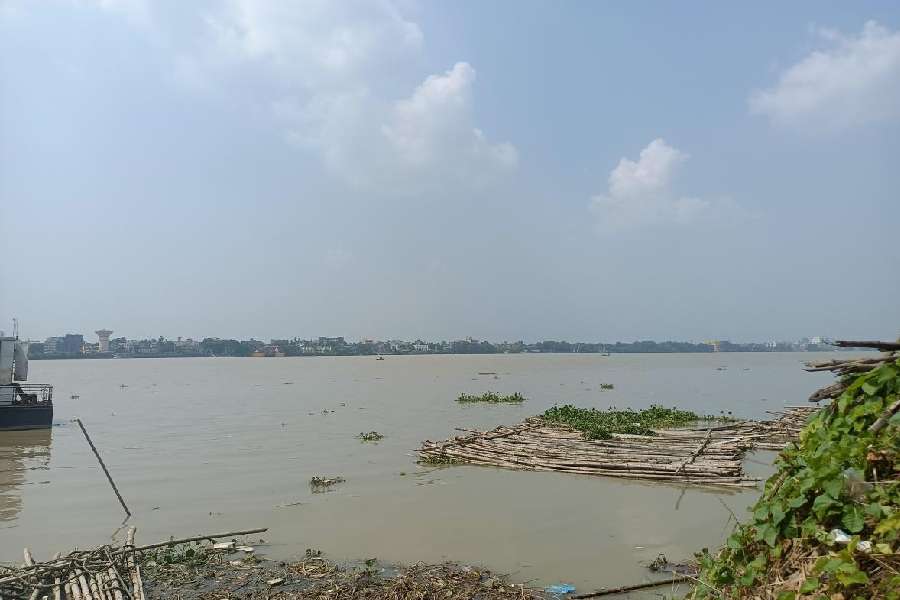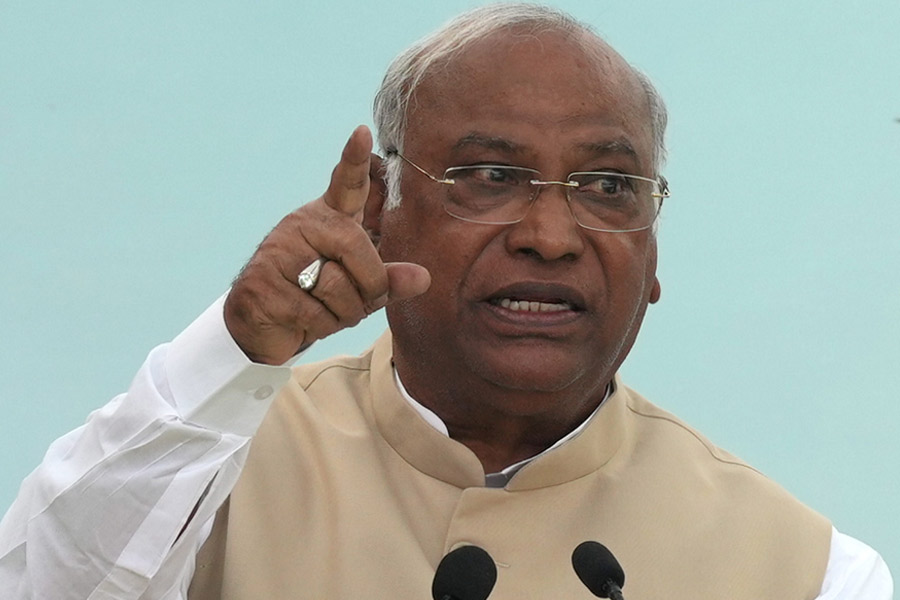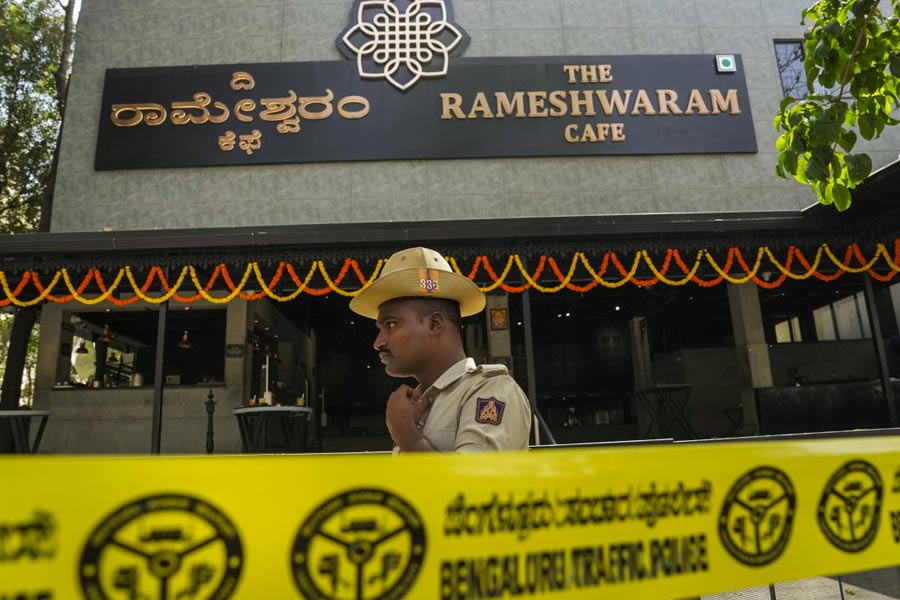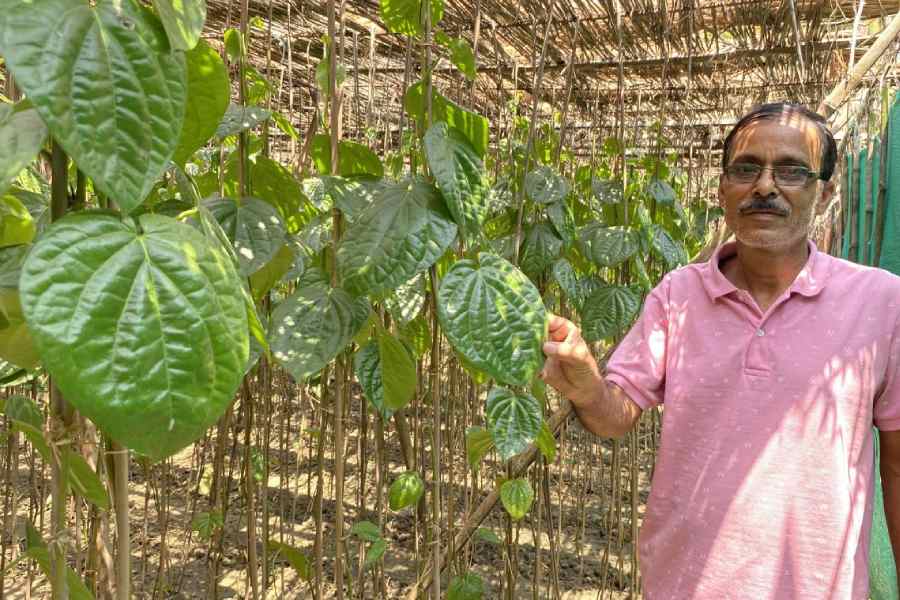Come Durga Puja and suddenly Calcutta is full of bamboo. It stays that way right through to the end of winter and Saraswati Puja. Bamboo pandals, bamboo scaffolding for hoardings and bamboo barriers to shepherd crowds. If you were not so busy negotiating your way past and around these, you might have stopped to wonder — where do the bamboos come from?
The answer is not one that would come to mind easily.
You see, a large number of these bamboos are floated down the Hooghly river. A few thousand of them, over a period of one-and-a-half months, travel down the waterway.
From Murshidabad, down the Bhagirathi and Jalangi rivers, borne by the Hooghly in their final leg and collected at Kuti Ghat in Baranagar. From Ghatal in Midnapore — actor Dev’s constituency — down the Shilabati, Rupnarayan and Hooghly. The distance between Murshidabad and Baranagar by road is 200 kilometres and Ghatal and Baranagar, 120 kilometres. In both cases, a mini-truck laden with bamboo would make the journey in under 24 hours.
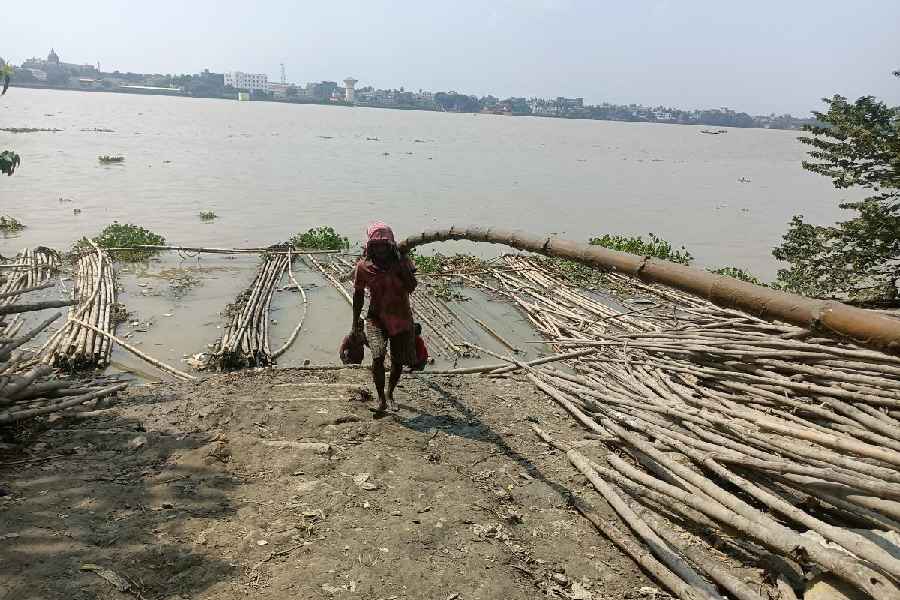
The seasoned bamboo unloaded on a river bank Pictures by Moumita Chaudhuri
But bamboos have been taking the riverine route ever since one can remember, claims Amarendra Halder who has been in this business for more than two decades. Halder has a shop at Kuti Ghat. He buys bamboo from the districts and sells them all over Bengal.
There are two kinds of bamboo. Raw/green bamboo is used for making pandals.
They come in trucks from Basirhat in North 24-Parganas, Siliguri and other pockets in North Bengal. Seasoned bamboo is used to make idols, for scaffolding for hoardings and lights, fencing, construction work, building makeshift stalls and hutments in the fringes of the city, for making furniture, wicker baskets... These bamboos are floated down as rafts.
This floating bamboo business is not as random as it sounds. There is an entire network in motion.
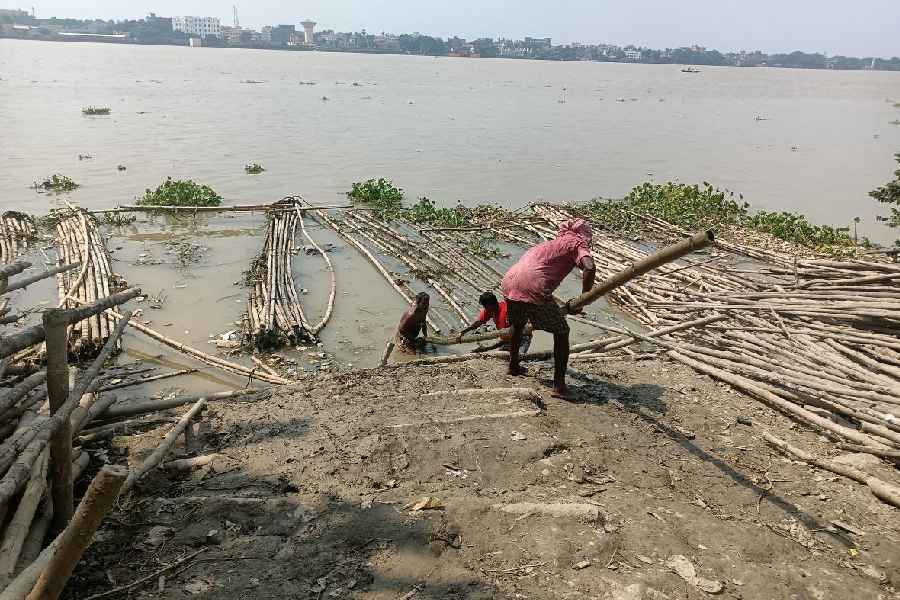
A raft being dismantled
Bengal’s bamboo growing districts are Nadia, West Midnapore and Murshidabad. Other than these, bamboo grows in Darjeeling, Cooch Behar and Alipurduar districts. The bamboo that grows naturally is harvested by locals hired by agents or middlemen. These middlemen know the small-time traders in Calcutta who are in this business. The bamboo that is cultivated is sold by the farmer concerned to one or more agents.
The agent employs labourers to make bamboo rafts. Each raft is made up of 6,000 bamboos. The agent also hires boatmen. Each raft is then hooked to a
rowing boat.
The boatmen belong to the regions from where the bamboo travels; for the rest of the year these men work as daily wagers or farm hands in their villages. Some also go out to fish.
The boatmen have to ensure they don’t go against the current. “So, while sailing out from Midnapore to Calcutta they will wait for high tide, and while setting out from Murshidabad or Nadia they wait for the low tide,” says Halder. On any given day, the boatmen —there are four per raft — have to row for eight hours with a break in between. “During breaks, they anchor someplace close to human habitation as it is safer. There have been incidents when they have been robbed,” says Halder.
Every boat has a covered area. Inside it, the boatmen cook, eat and sleep. “These men would have typically started out as boys. They come with their father or uncle or elder brothers and learn to read the weather and the currents,” says a worker at Kuti Ghat. “They do not need to refer to any almanac or smartphone to know when there will be a high tide or a low tide,” he adds.
The person who buys the bamboo also pays these men; someone like Halder.
That day in October, Kuti Ghat had just received a fresh consignment of bamboo.
“It is illegal to bring long bamboo in trucks. The fines are very high,” says Halder. The
reasons are many. First, a good-sized bamboo is 29 feet long and will stick out of the vehicle — that can cause accidents. Then, there is the matter of weight, a single truck can carry about 600 bamboos, any more and the truck may overturn.
“The rainy season is about to end and that is why the bamboos have started coming in,” says Halder. “Bamboos are not harvested during the monsoons as that is when they bloom. Also, this is the time when the rivers are too full and it is very difficult and risky to row a boat.”
Just where the flight of steps disappears into the river, there is a bamboo raft tied tightly to a pole with a thick rope. Some distance away, there is another raft parked below a banyan tree. Some men are pulling out the bamboo from the river with their bare hands, some others are dragging them up the stairs. The bamboos are covered with alluvial soil. The soil adds to the weight of each bamboo, which are sold per piece — anything between Rs 150 and Rs 200.
The bamboos float down between October and June.
They are collected along the riverbanks in Uttarpara, Salkia, Metiabruz, Nazirganj, Batanagar, Budge Budge and Sankrail.
The street adjacent to Kuti Ghat has several shops that deal in the buying and selling of
bamboo. Halder’s is one of them, it overlooks the river. Behind it, a man is busy making a contraption. It is for a multistorey that is coming up across the road. “They are sturdy, the masons use them for support. The green bamboo will bend and break if someone stands on them, but the seasoned bamboo last a decade,” says the labourer.
And that’s how the bamboo continues to travel.
There is a third kind actually. Pronounced bumboo, it is more common than the greens and browns, invisible and strictly experiential... but then you know that already.

